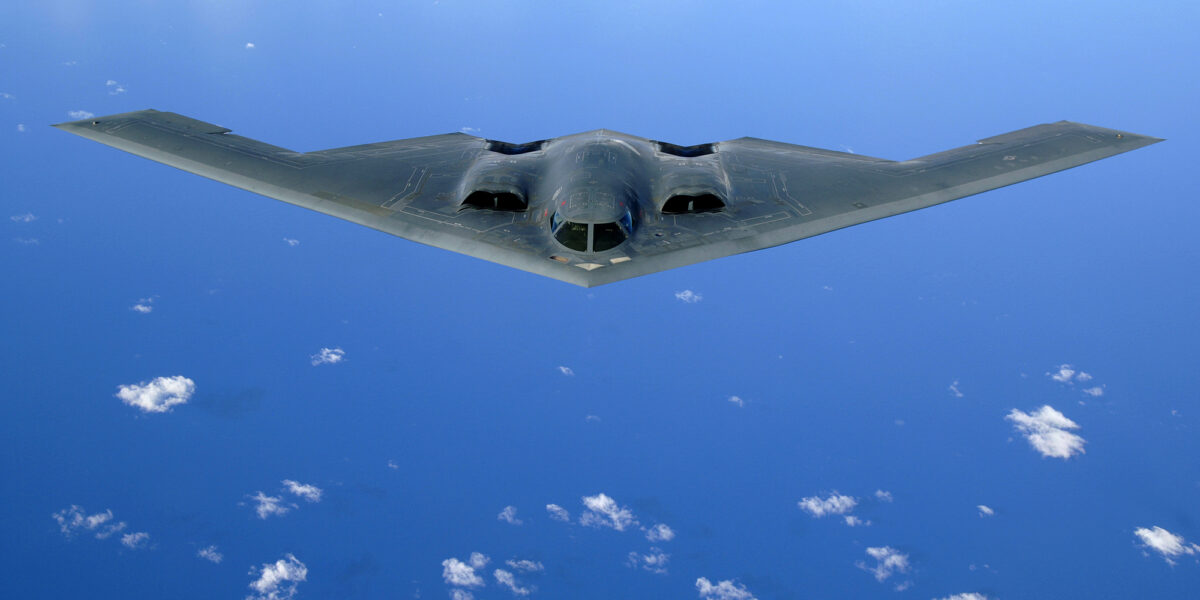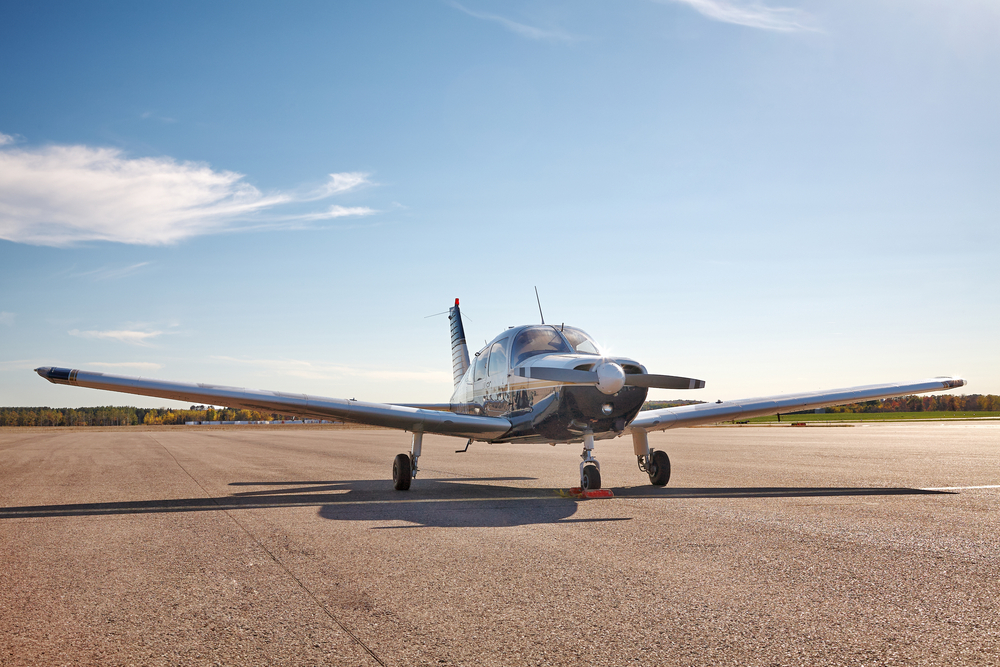Stealth technology revolutionized air warfare by making aircraft nearly invisible to radar systems. Low observable designs combine radar-absorbing materials, angular surfaces, and internal weapons carriage to minimize detection. Understanding which aircraft achieve true stealth capability—and which merely reduce signature—reveals the cutting edge of aerospace engineering and military strategy.
Quick Answer: The most advanced stealth aircraft include the B-2 Spirit bomber (0.0001 m² RCS), F-22 Raptor (bumblebee-sized radar signature), F-35 Lightning II (most produced stealth fighter, 1,000+ built), B-21 Raider (next-gen bomber entering 2027), and RQ-170 Sentinel (stealth drone). The B-2 remains undetected after 30+ years of operations. China’s J-20 and Russia’s Su-57 claim stealth but lack true low-observable features. Sixth-generation programs promise adaptive camouflage and active radar cancellation.
1. Northrop Grumman B-2 Spirit: The Original Stealth Bomber
The B-2 Spirit entered service in 1997 as the world’s only operational stealth bomber for 25+ years. Only 21 were built at $2.1 billion each—the most expensive aircraft ever produced. The flying wing design eliminates tail surfaces creating a radar signature smaller than a large bird. No B-2 has ever been detected by enemy radar during combat operations despite missions over Yugoslavia, Iraq, Afghanistan, and Libya.
Four General Electric F118 turbofan engines produce 17,300 pounds thrust each, buried deep in the wing to shield infrared signature. Maximum speed reaches only Mach 0.95—slow for modern combat aircraft. However, 6,000-mile unrefueled range allows striking anywhere on Earth with aerial refueling. The aircraft carries 40,000 pounds of precision-guided munitions in two internal bays. External hardpoints exist but would compromise stealth.
Radar cross-section estimates range from 0.0001 to 0.0003 square meters—roughly golf ball-sized on radar screens. Special radar-absorbing paint requires climate-controlled hangars and extensive maintenance. Flying hour costs exceed $150,000, restricting operations to critical missions. The B-2 force remains remarkably reliable with 90%+ mission capable rates. All 21 aircraft will serve until B-21 Raiders enter full operation around 2035.
2. Lockheed Martin F-22 Raptor: Air Dominance Through Invisibility
The F-22 combines supercruise capability with stealth creating unmatched air superiority. Its radar signature measures approximately 0.0001 square meters—similar to a bumblebee. In exercises, F-22s achieve 30:1 kill ratios against fourth-generation fighters including F-15s and F-16s. Enemy pilots never detect the F-22 before missiles impact their aircraft. Only 187 F-22s were built before production ended in 2011.
Twin Pratt & Whitney F119 engines with thrust vectoring produce 35,000 pounds thrust each. Supercruise at Mach 1.8 without afterburners provides tactical advantages impossible for conventional fighters. Internal weapons bays carry six AIM-120 missiles and two AIM-9 Sidewinders maintaining stealth profile. External hardpoints can mount additional weapons sacrificing low observability when stealth isn’t required.
Radar-absorbing skin requires 40+ maintenance hours per flight hour—significantly more than F-35. Operating costs reach $85,000 per flight hour. Despite this, the F-22 provides capabilities no other aircraft matches. The aircraft will receive continuous upgrades maintaining relevance through 2045. Congress prohibited exports preserving technological advantages. No nation has fielded an equivalent air superiority stealth fighter.
3. Lockheed Martin F-35 Lightning II: Affordable Stealth
The F-35 brings stealth to multiple roles and services through three variants sharing 80% commonality. Over 1,000 aircraft have been delivered with 3,000+ on order globally. Unit costs dropped to $80-$110 million—half initial projections. The F-35 emphasizes sensor fusion and network operations over pure kinematic performance. It serves as an airborne sensor platform sharing data across entire battle networks.
Stealth design prioritizes frontal aspect where threats concentrate. Radar cross-section from the front approaches 0.0005 square meters. Side and rear aspects show higher signatures but remain significantly lower than fourth-generation fighters. Internal weapons bays carry two 2,000-pound bombs and two AIM-120 missiles in strike configuration or six AMRAAMs in air-to-air loadout. External hardpoints add 15,000 pounds capacity when stealth becomes secondary.
The AN/APG-81 AESA radar combined with Distributed Aperture System provides 360-degree situational awareness. Pilots see through the aircraft via helmet-mounted display projected from external cameras. This god’s-eye view eliminates blind spots. Operating costs run $33,000-$44,000 per flight hour depending on variant—less than F-22 but higher than fourth-generation fighters. The F-35’s reduced maintenance requirements and improving reliability offset higher per-hour costs.
4. Northrop Grumman B-21 Raider: Next-Generation Penetrating Strike
The B-21 Raider represents America’s next-generation stealth bomber entering service around 2027. Six test aircraft fly currently with 100+ planned. The flying wing design resembles a scaled-down B-2 incorporating 30 years of stealth advancement. Unit costs target $550-$700 million per aircraft—far less than B-2 adjusted for inflation. Details remain highly classified given strategic importance.
Twin engines (manufacturer unconfirmed) provide sufficient thrust for subsonic penetration missions. Range estimates exceed 5,000 miles unrefueled with global reach via aerial refueling. Internal payload capacity remains classified but likely exceeds 30,000 pounds. The aircraft will carry conventional precision weapons, nuclear gravity bombs, and future standoff munitions. Advanced materials and manufacturing techniques reduce signature beyond B-2 levels while cutting maintenance requirements.
Open systems architecture allows rapid technology insertion without major airframe modifications. The B-21 emphasizes network connectivity sharing targeting data with other platforms. Optionally manned capability may allow autonomous operations in extremely high-threat environments. The Raider will replace B-1B and B-2 bombers becoming the backbone of American strategic bombing through 2070. International interest exists but exports seem unlikely given technology sensitivity.
5. Chengdu J-20 Mighty Dragon: China’s Stealth Challenge
China’s J-20 entered service in 2017 making China only the third nation to field operational stealth fighters. Production exceeds 200 aircraft with numbers growing rapidly. The canard-delta configuration prioritizes frontal stealth while accepting compromises in other aspects. Western assessments suggest the J-20’s frontal radar cross-section approaches 0.05 square meters—50-100 times larger than F-22 but still significantly stealthier than fourth-generation fighters.
Initial aircraft used Russian AL-31 engines limiting performance. Newer J-20s feature indigenous WS-10C engines with WS-15 development promising supercruise capability by 2025-2026. Four internal weapons bays carry six PL-15 long-range air-to-air missiles. The large airframe provides exceptional fuel capacity enabling 1,200+ mile combat radius. This range advantage partially offsets stealth compromises—engaging enemies from distances where detection matters less.
Exposed engine nozzles, canards, and less refined surface treatment compromise stealth compared to F-22 or F-35. However, the J-20 demonstrates China’s rapid progress in low observable technology. Continuing improvements to engines, materials, and systems narrow gaps with Western aircraft. The J-20’s operational impact depends on employment doctrine—its stealth and range suit defensive air superiority over Taiwan or South China Sea where ground-based sensors supplement aircraft sensors.
6. Sukhoi Su-57 Felon: Russia’s Delayed Entry
Russia’s Su-57 represents that nation’s answer to F-22 and F-35 but production remains limited. Only 10-15 operational aircraft exist with ambitious plans for 76 by 2028. Development delays, funding constraints, and technical challenges hampered the program. The Su-57 emphasizes maneuverability and sensor capability over pure stealth—reflecting Russian air combat doctrine prioritizing close-range engagements.
Twin Saturn AL-41F1 engines with 3D thrust vectoring enable post-stall maneuvers and extreme agility. Maximum speed exceeds Mach 2 with supercruise around Mach 1.3. Six internal weapons bays carry air-to-air and air-to-ground munitions. Ten external hardpoints provide flexibility when stealth becomes unnecessary. The N036 Byelka radar uses multiple AESA arrays providing comprehensive coverage.
Stealth characteristics lag Western aircraft due to exposed engine faces, gaps in panel alignment, and less sophisticated materials. Estimates suggest radar cross-section around 0.1-1.0 square meters from optimal angles—10-100 times larger than F-22. The Su-57 prioritizes frontal stealth accepting rear-aspect detectability. Limited production numbers restrict operational impact. Export interest exists but few nations can afford cutting-edge Russian fighters.
7. RQ-170 Sentinel: The Beast of Kandahar
The RQ-170 Sentinel represents America’s operational stealth drone providing persistent surveillance in denied airspace. Exact numbers remain classified but estimates suggest 20-30 aircraft serve. The flying wing design mirrors B-2 and B-21 reducing radar signature. Unarmed reconnaissance missions over Iran, Pakistan, and other denied areas demonstrate capability. One aircraft crashed in Iran in 2011 exposing design details to adversaries.
A single turbofan engine (type classified) provides sufficient power for long-endurance missions at high altitude. Maximum altitude likely exceeds 50,000 feet placing the aircraft beyond most threats. Endurance estimates range from 12-24 hours depending on mission profile and altitude. Electro-optical and synthetic aperture radar sensors provide day/night imagery. Satellite datalinks transmit information to ground stations and other platforms in real-time.
The Sentinel’s stealth characteristics remain classified but likely approach or exceed F-35 levels given specialized reconnaissance mission. Lower speeds and smaller size compared to manned aircraft allow more aggressive signature reduction. The RQ-170 serves as technology demonstrator for larger unmanned combat aerial vehicles including the RQ-180 reportedly under development. Future reconnaissance and strike missions may rely entirely on unmanned stealth platforms reducing risk to human aircrew.
8. X-47B: Carrier-Based Stealth Demonstration
The X-47B demonstrated carrier-based unmanned combat operations from 2013-2015. This tailless flying wing successfully launched and recovered from aircraft carriers including autonomous aerial refueling. While not operational, the X-47B proved stealth drones can integrate into carrier operations. The program paved the way for MQ-25 Stingray tanker and future unmanned strike aircraft.
Pratt & Whitney F100 turbofan engine provided power for carrier catapult launches and arrested landings. Wingspan of 62 feet folded for carrier deck operations. Maximum takeoff weight reached 44,000 pounds including 4,500 pounds internal payload. Stealth design emphasized low radar signature across broad frequency ranges. Autonomous flight systems handled all phases including precision carrier approaches in day/night conditions.
The X-47B’s cancellation in favor of less ambitious MQ-25 tanker disappointed advocates of unmanned strike capability. However, technology developed feeds future programs including potential sixth-generation carrier-based fighters. Navy leadership expects unmanned combat aircraft on carriers by 2030. The X-47B proved key concepts enabling this transition from manned to mixed manned-unmanned carrier air wings.
Future Stealth Technology
Sixth-generation stealth aircraft incorporate adaptive materials changing shape and properties to optimize signatures across threat scenarios. Active radar cancellation generates signals matching incoming radar waves but inverted, theoretically creating perfect stealth. Plasma stealth uses ionized gas clouds absorbing radar energy. These technologies remain developmental but promise revolutionary improvements.
Multi-spectral stealth addresses infrared, visual, acoustic, and electromagnetic signatures beyond traditional radar stealth. Modern sensors detect aircraft through multiple means requiring comprehensive low observable design. Reducing infrared signature from engines and airframe friction becomes as critical as radar stealth. Future aircraft may appear nearly invisible across the electromagnetic spectrum.
Networked stealth operations emphasize connectivity over individual aircraft capability. One stealth platform detects threats while others engage from standoff ranges. This distributed approach complicates enemy responses while reducing risk to individual platforms. Artificial intelligence will manage complex multi-platform operations beyond human cognitive capacity. The future of stealth emphasizes system-of-systems warfare rather than individual technological advantages.
Learning About Stealth Technology
Understanding stealth aircraft requires knowledge of radar physics, materials science, and tactical operations. The Modern Military Aircraft encyclopedia provides comprehensive coverage of stealth development from F-117 through current programs. For detailed technical specifications and operational history, The World Encyclopedia of Fighter Aircraft includes chapters on low observable technology and its impact on air warfare.
The Strategic Impact of Stealth
Stealth technology fundamentally changed military planning by enabling operations in heavily defended airspace without overwhelming force. Pre-stealth era required extensive suppression of enemy air defenses consuming dozens of aircraft and exposing crews to significant risk. A single B-2 penetrates defended airspace striking 16 targets without support aircraft. This efficiency transforms tactical options available to military planners.
The stealth advantage proves temporary as detection technology advances. Russia and China develop longer-wavelength radars detecting stealth aircraft at reduced ranges. Networked radar systems triangulate positions despite low signatures. Infrared search and track systems bypass radar entirely. The cat-and-mouse game between stealth and detection continues driving aerospace investment globally.
Nations without stealth capability face significant disadvantages in modern conflict. Operating fourth-generation fighters against stealth opponents creates unsustainable loss rates. This reality drives stealth programs globally including South Korea’s KF-21, Turkey’s TF-X, and India’s AMCA. Stealth becomes table stakes for great power competition rather than revolutionary advantage. The question shifts from whether nations field stealth aircraft to how effectively they employ them.
Note: This article contains affiliate links. We may earn a commission from purchases made through these links at no additional cost to you.


Leave a Reply